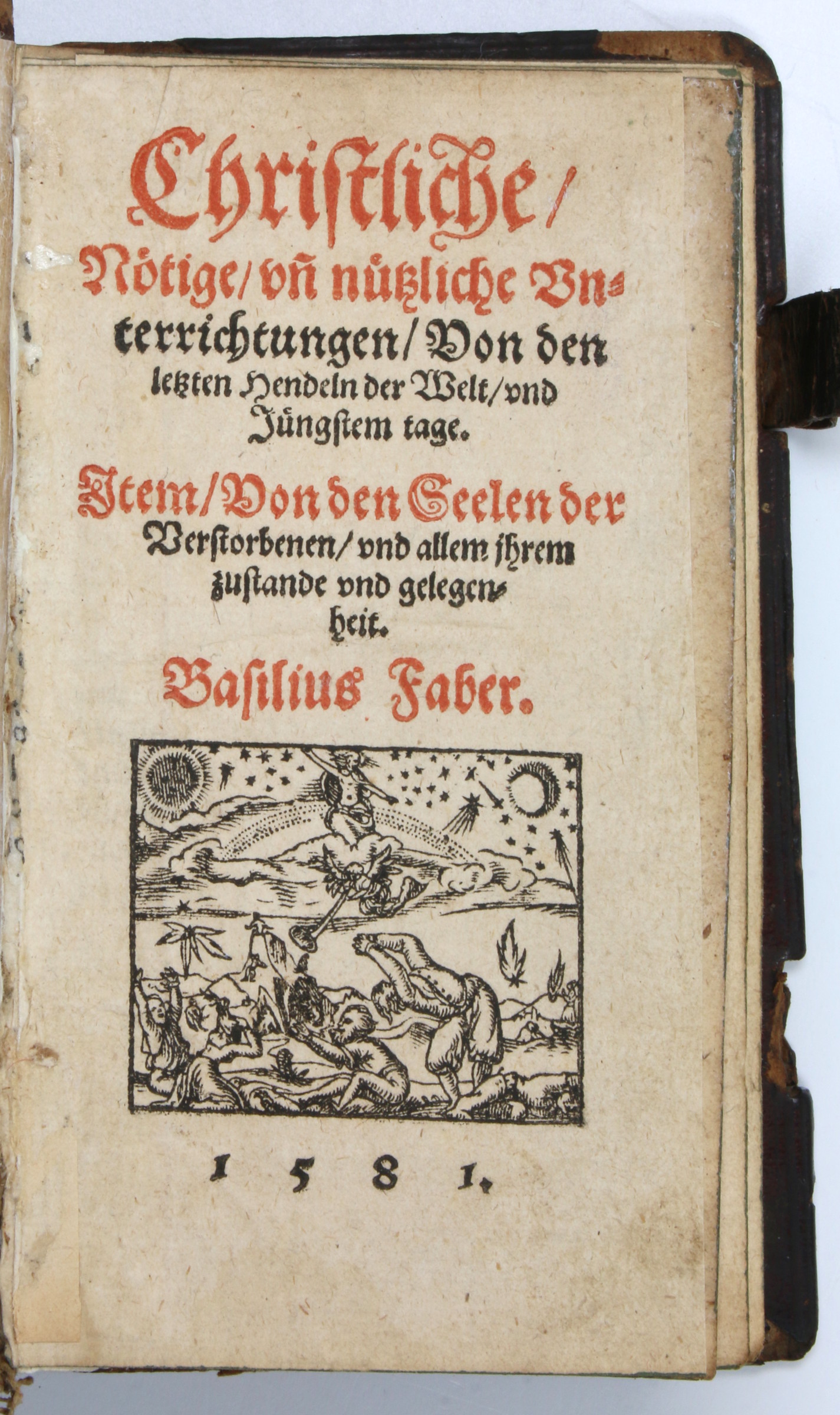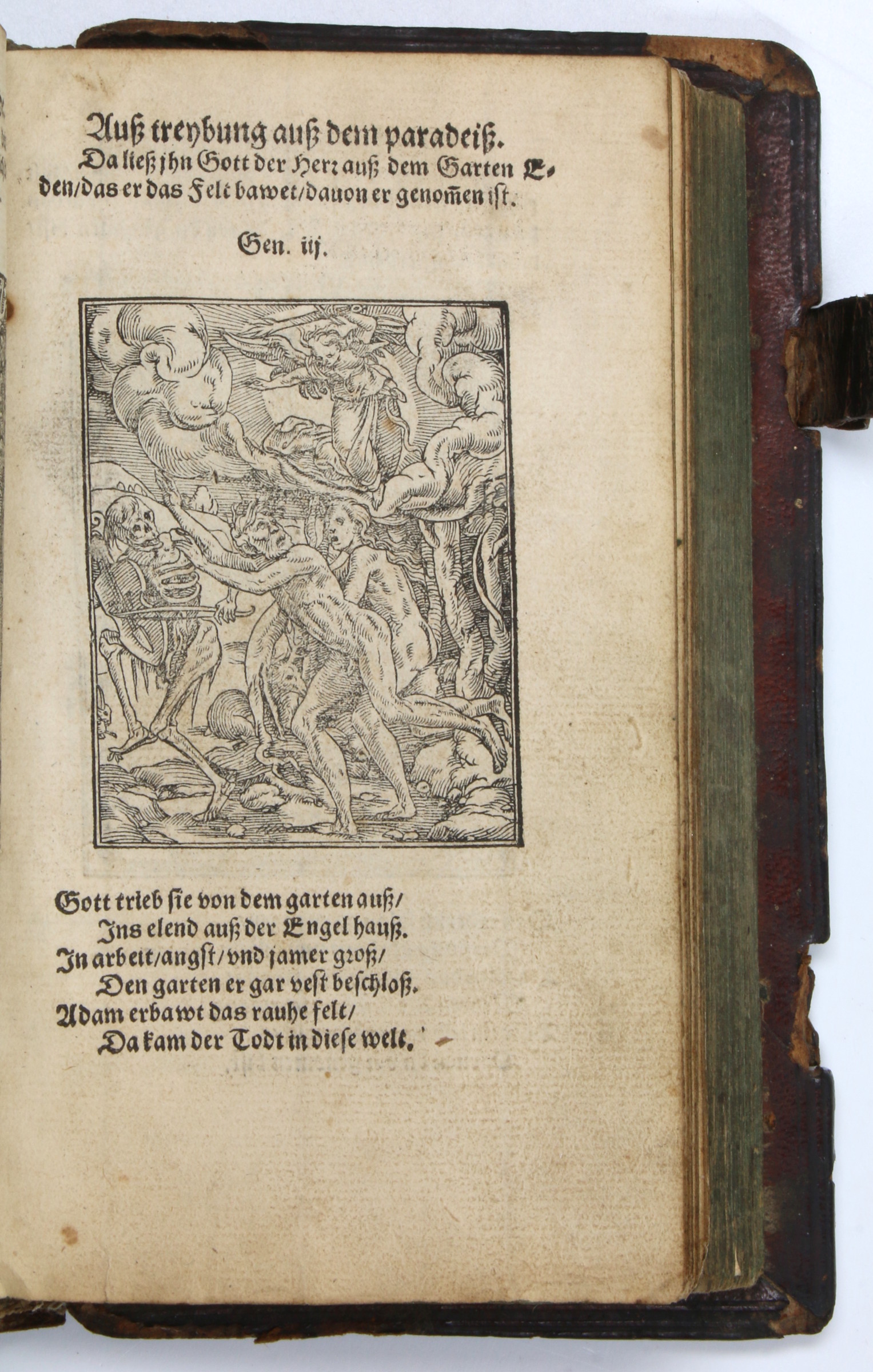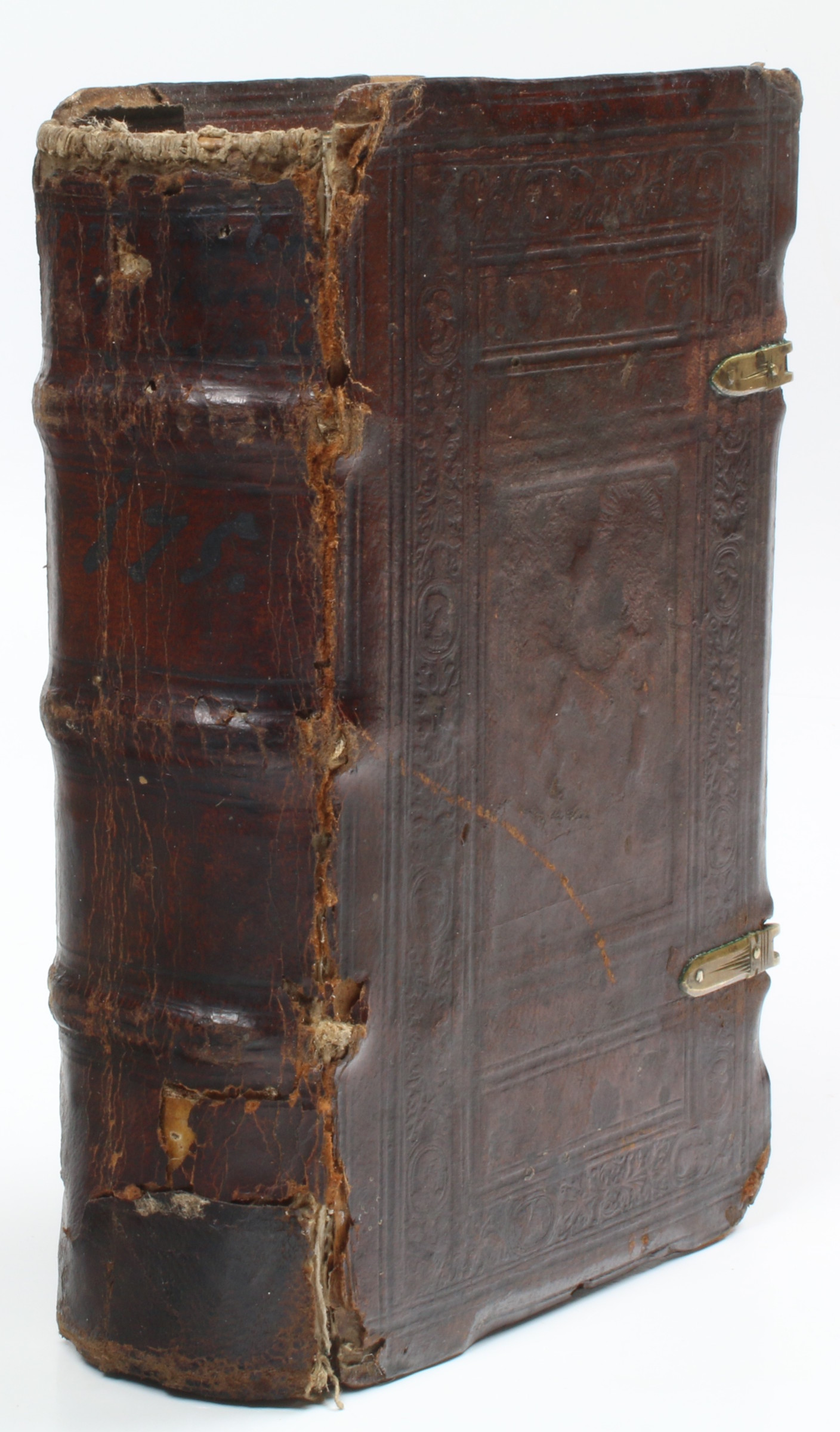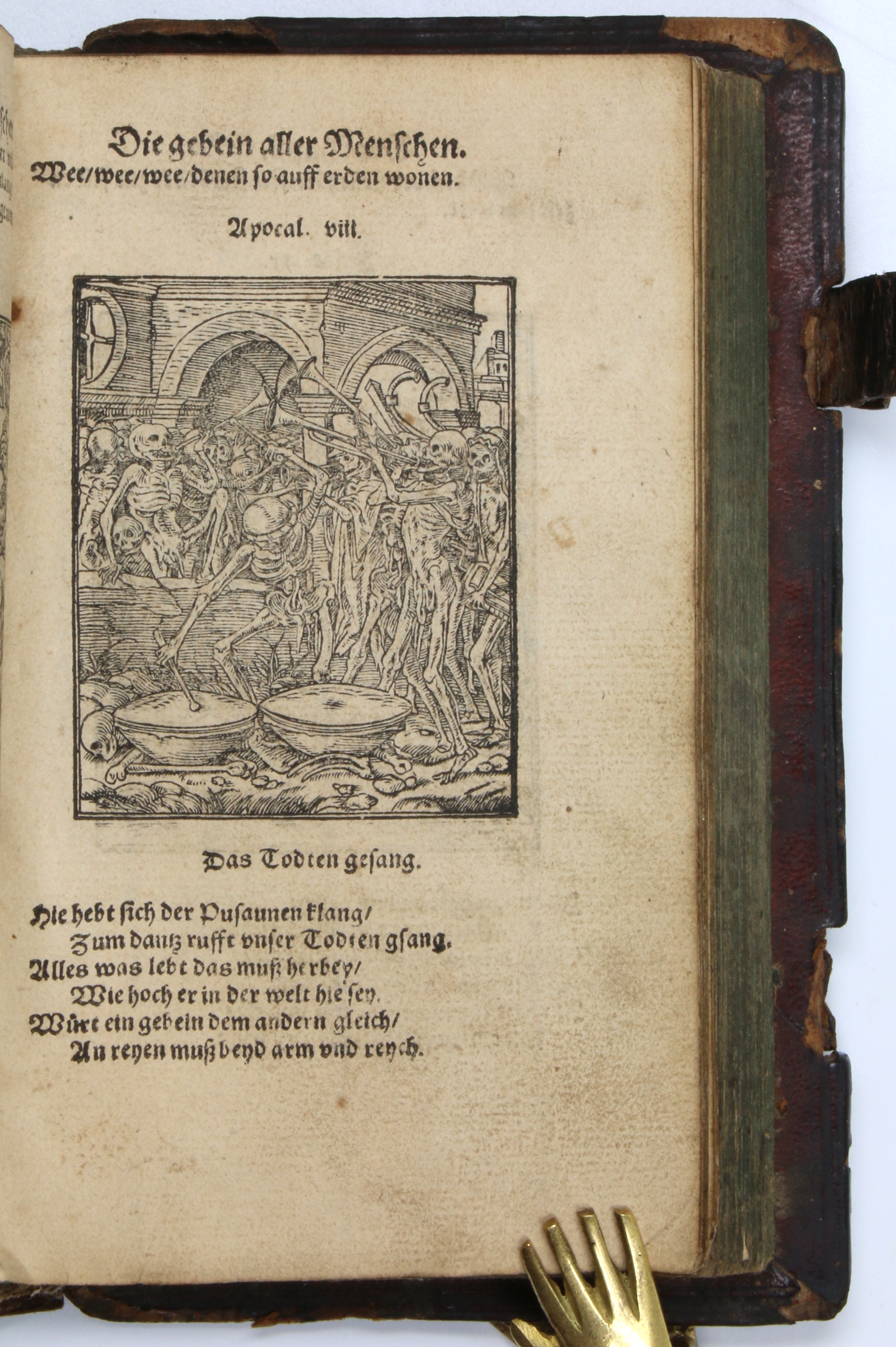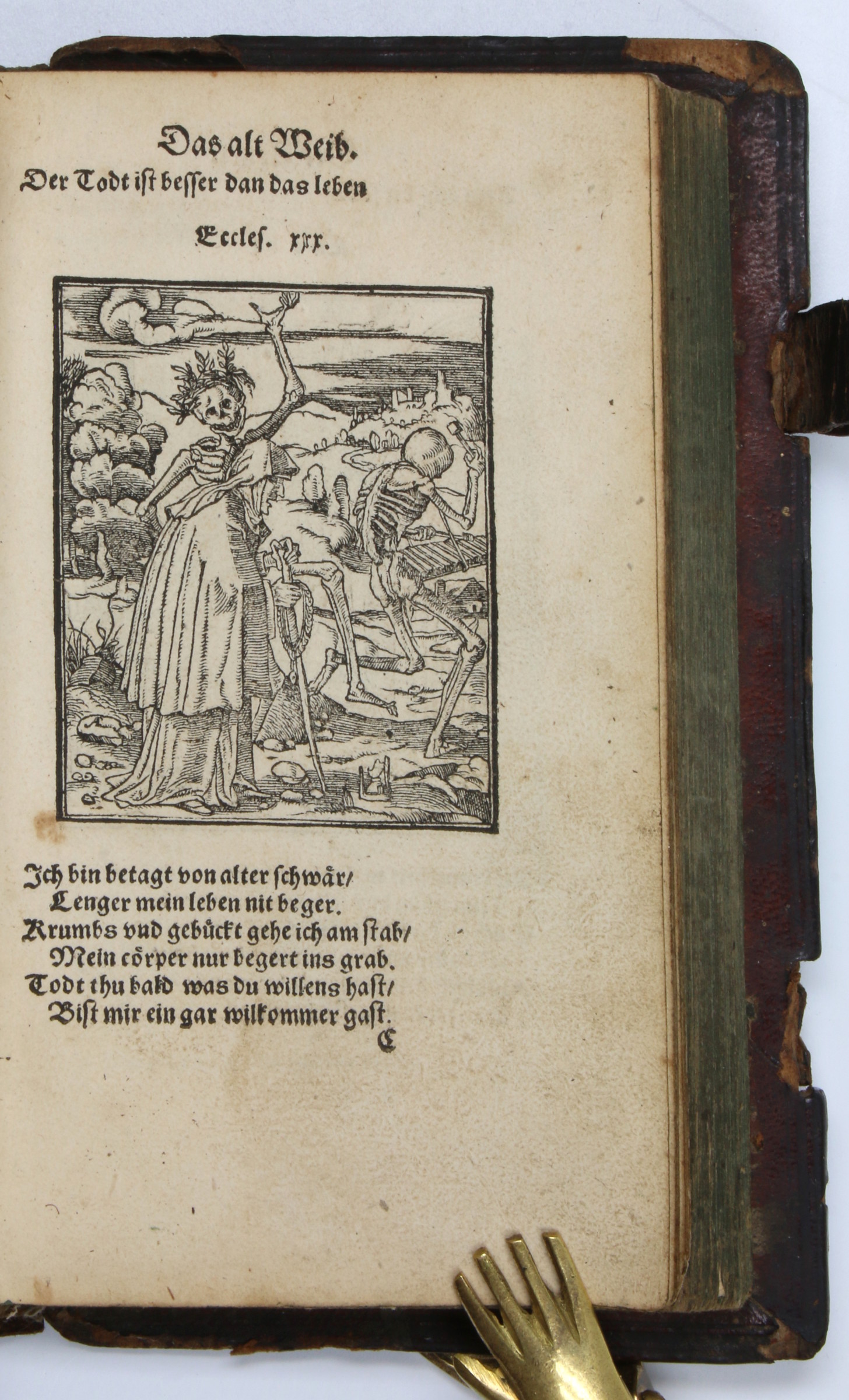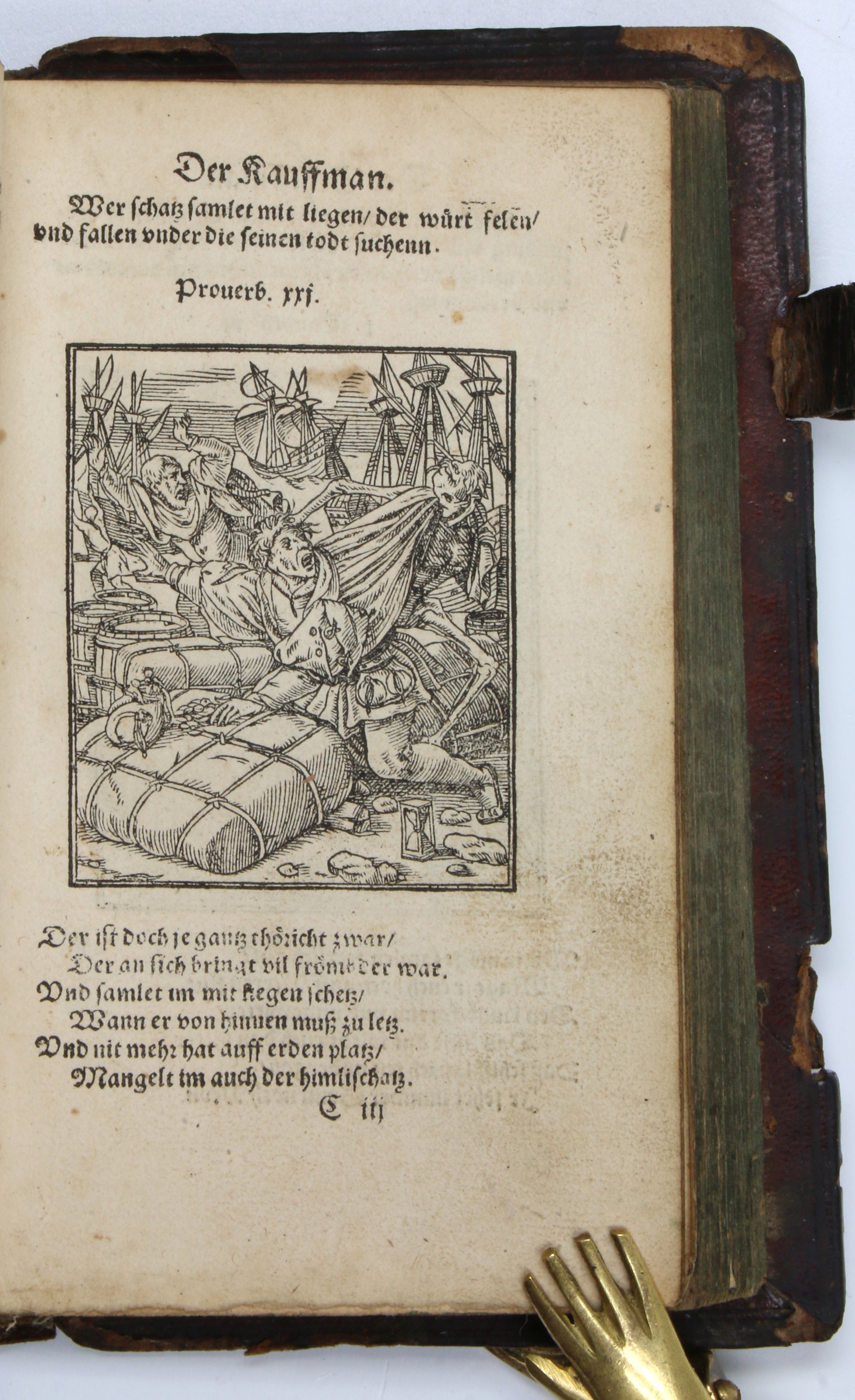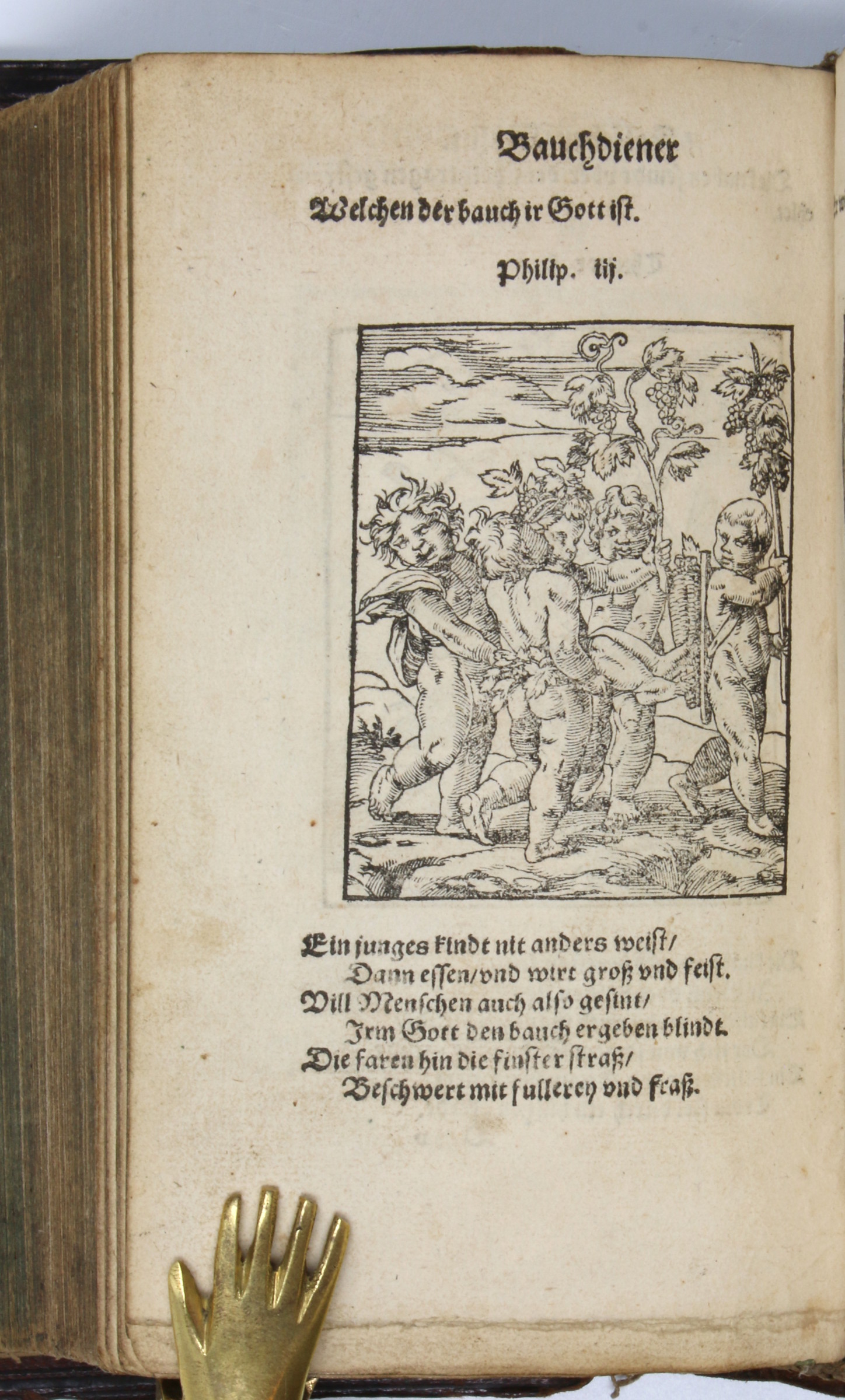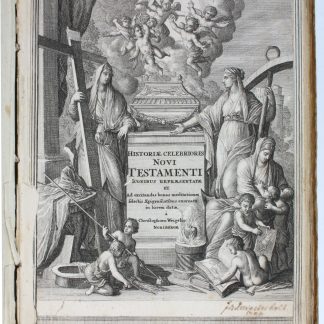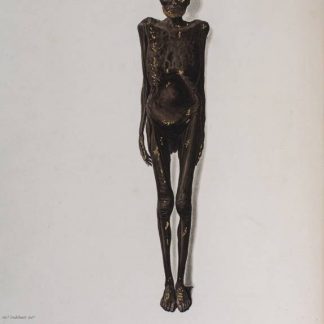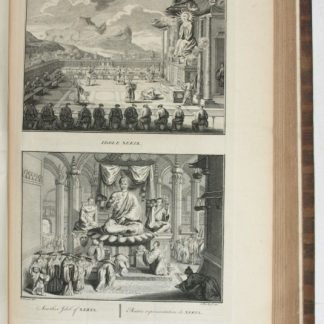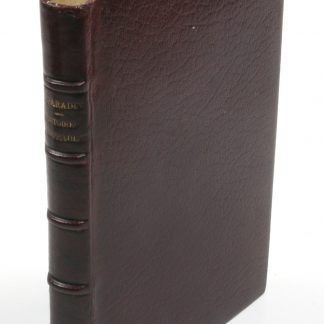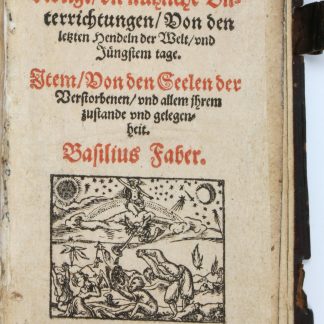With a complete set of Holbein's woodcuts for the Dance of Death
Der Todtendantz, durch alle Stende unnd Geschlecht der Menschen, darinnen jr herkommen und ende, nichtigkeit und sterblichkeit als in eim Spiegel zu beschawen, fürgebildet, unnd mitt schönen Figuren gezieret.
8vo (113 x 174 mm). (116) ff. (last blank). With 53 in-text woodblock prints.
(Bound after) II: Faber, Basil. Christliche, nötige un[d] nützliche Unterrichtungen, von den letzten Hendeln der Welt [...]. (Schmalkalden, Michael Schmuck), 1581. (200) ff. (last blank). Title-page printed in red and black with woodcut vignette. Contemporary full leather ruled and stamped in blind, raised spine bands, early library number in ink on spine, remains of pretty metal and leather clasps. All edges faintly dyed blue.
€ 8.500,00
The most famous set of woodcuts designed by Hans Holbein the Younger (ca. 1497-1543), illustrating the Dance of Death, the completion of which marked a key phase of the artist's early career in book illustration, and perhaps foreshadowed the recurring theme of death in his later work, such as his famous painting The Ambassadors. Scheidt's German edition is based on the French attributed to Gilles Corrozet. The illustrations are each presented with a quotation from the Vulgate in German, and German verses below.
"The 53 fine woodcuts are close copies of the 1547 edition of Holbein's originals, which were cut by Lützelburger [...] They are, however, in the reverse as regards right and left and differ in details: they are also larger in size, measuring 55 mm. wide, that is, 5 mm more than the originals" (Fairfax/Murray, p. 358). Three of the present cuts (the Abbess, the Canon, and the Justice) have the engraver's mark "AS" in the form of a ligature, indicating "Anton Silvius or Bosche, a prolific artist, often confused with an inferior engraver (A) of the same period" (ibid., p. 359).
Bound before the "Totentanz" is another 16th century book about death and the comforting of the dying, this one by Basil Faber (1520-76), expanded from earlier sources. This rare, bibliographically unrecorded edition is not identical with the one published by Hans Steinmann in Leipzig the same year, copies of which survive in Gotha and Cracow.
Lower edge of spine chipped and replaced, light wear, remains of clasps; evidence of removal of previous material from front free endpaper; title-page of Faber text rebacked. Plates quite well-preserved. The front pastedown includes a short list of members of the family Muco, dated 1671-1672, possibly a death registry; contemporary note "Mein Glick stett zu Gottes Hant" and stamp of the L'achki collection on lower pastedown.
VD 16, C 5279. Adams D 79 (collation faulty). BM-STC German 235. Fairfax/Murray 203.
II: Not in VD 16 (cf. ZV 5661 for Hans Steinmann's issue in 216 ff.).

